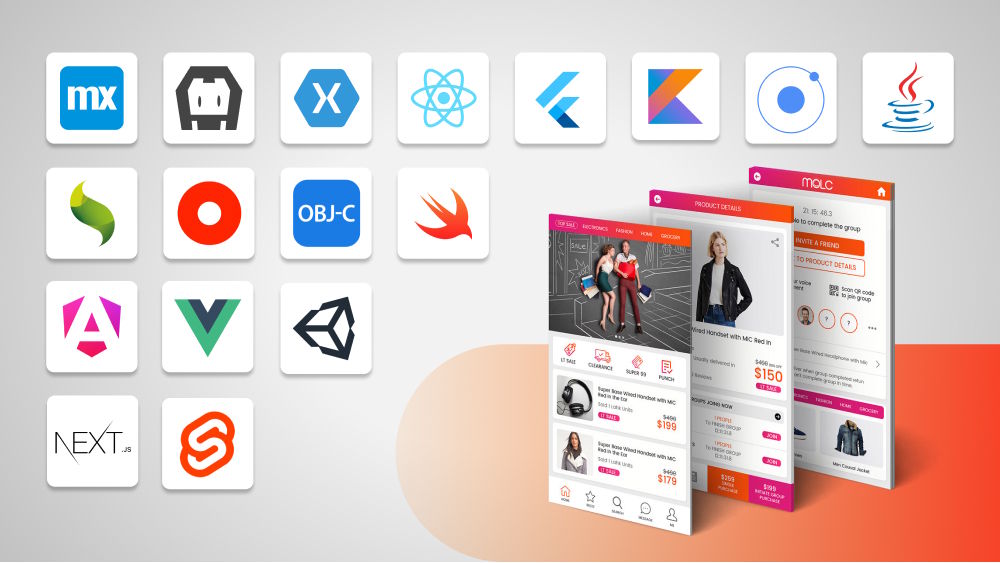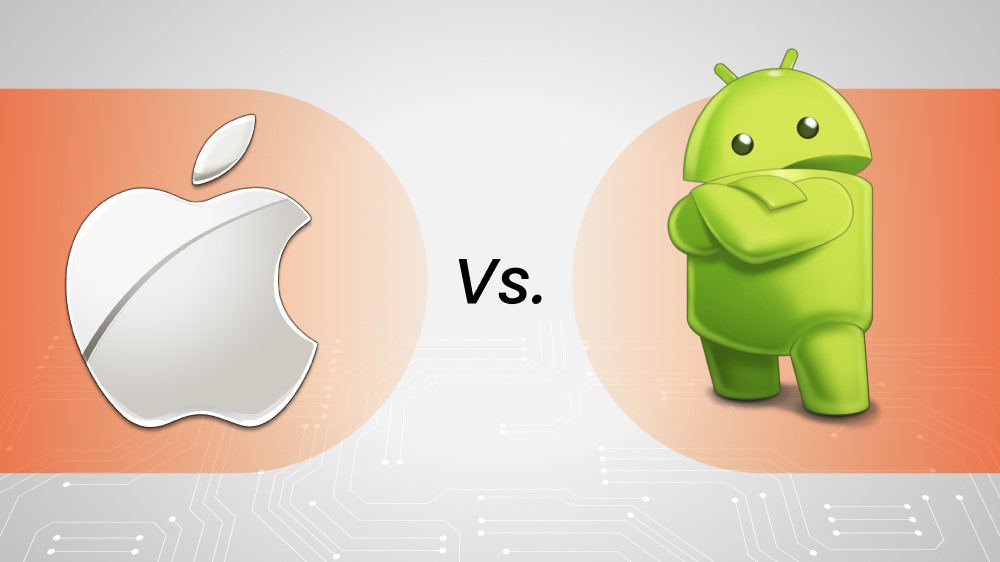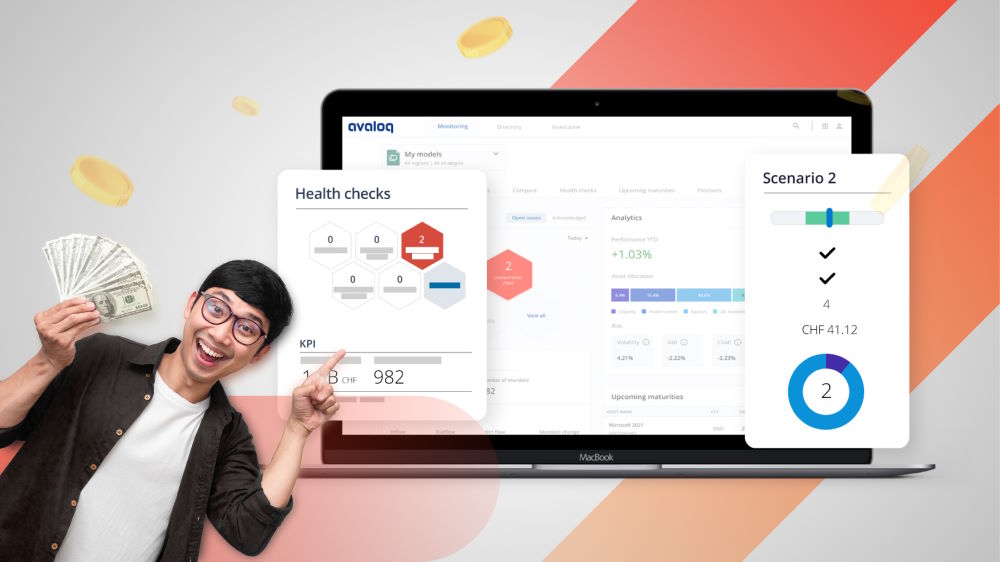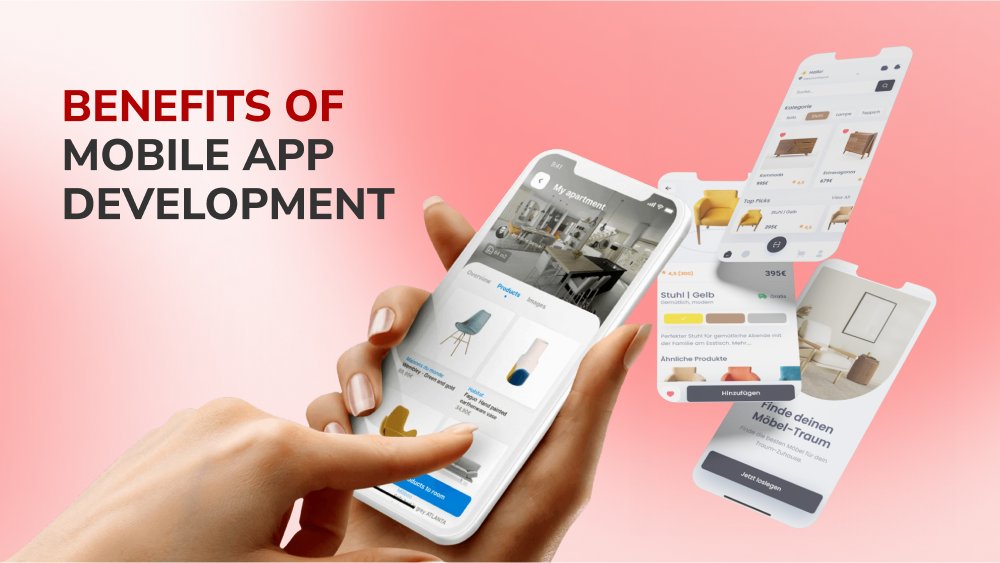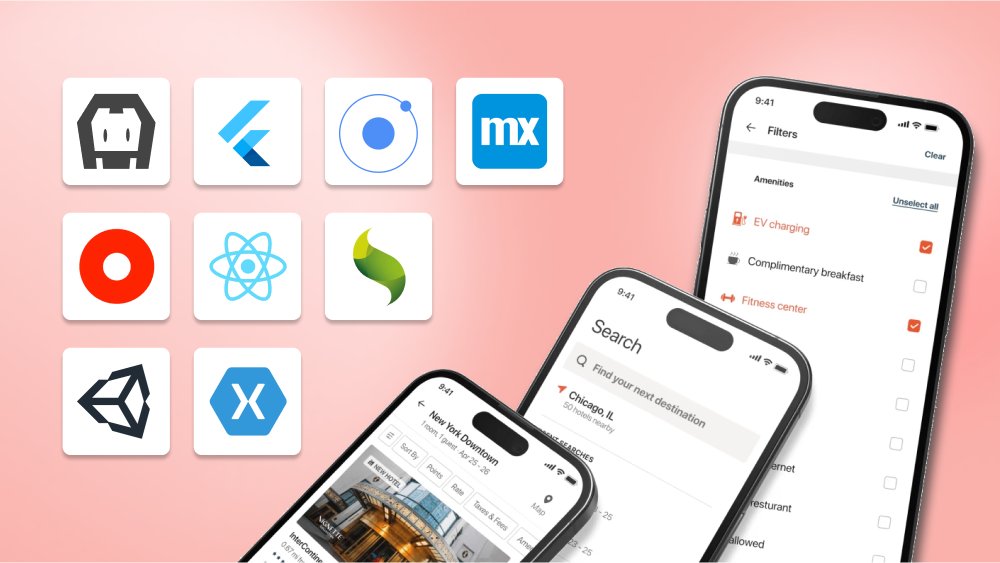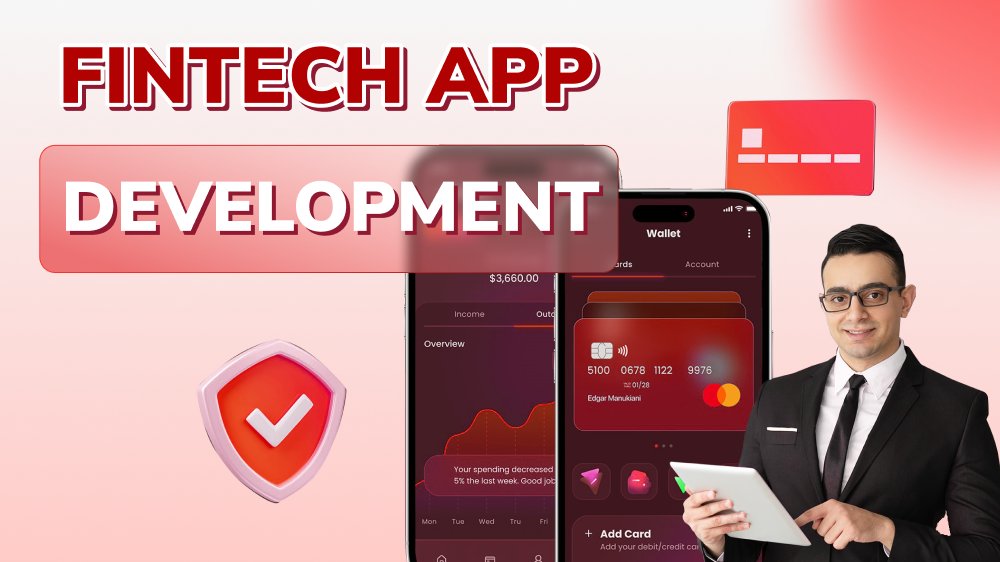A Guide to Taxi Booking App Development: From Novices to Navigators
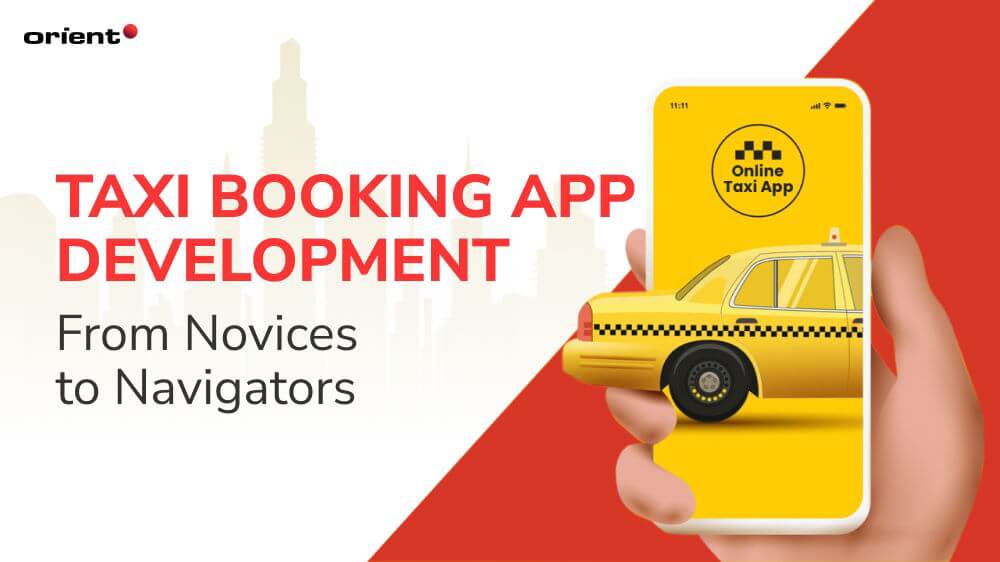
Content Map
More chaptersYou are going out, but you prefer not to ride by yourself. What would you do? Let’s book a taxi to where you want. Indeed, we are talking about booking via a smart gadget with mere clicks, not hailing a taxi traditionally.
The staggering evolution of technologies has completely transformed how food delivery and transportation services operate worldwide. At the present time, online taxi booking services are commonplace, and we are all familiar with instant booking via mobile apps. Uber, Grab, and Ola, for example.
At a 4.2% CAGR, the global taxi booking app market is forecasted to be valued at $283 billion by 2028. With approximately 1,747.13 million people engaging with ride-hailing services on a daily basis in 2024, the taxi booking business is positively a goldmine.
In this markdown, we will discuss everything you need to know about taxi booking app development before making a move. Get ready for a detailed rundown.
What Are Taxi Booking Apps?
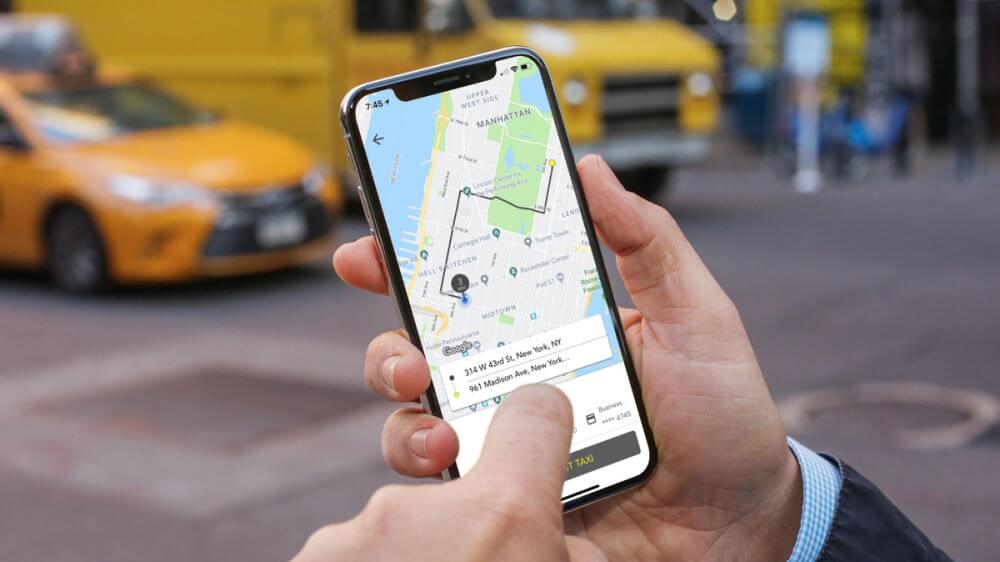
Taxi or cab booking app refers to a digital platform in which users can book and pay for a ride from a fleet of drivers who use their own vehicles or those provided by taxi service providers. It can be built for both Android and iOS platforms or for each separately.
Within a short timeframe, a taxi booking application connects a passenger with a nearby driver, which is the core logic of this type of digital solution. Typically, the passengers can track the drivers’ location and arrival in real time or preview estimated trip fares and time of arrival before booking. Additionally, users can also select vehicle types or other specific preferences regarding their rides.
The concept of using such an app is also known as ride-sharing or ride-hailing services, moving away from the conventional method of flagging down a taxicab on the street or calling a taxi dispatch center for one.
Who Are Taxi App Users?
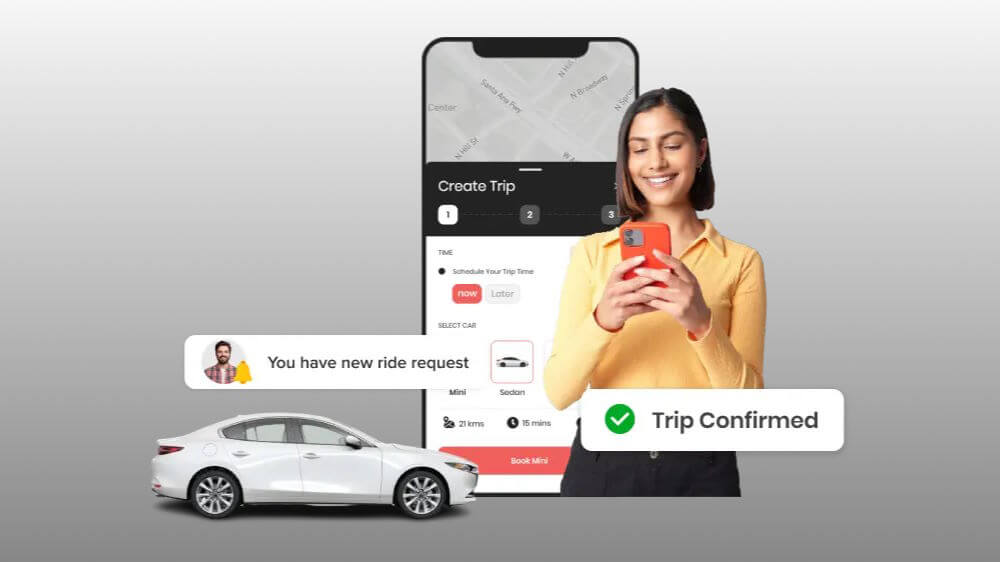
It is not over-exaggerating to state that taxi booking applications have been a huge stride made for the taxi business industry worldwide. Such apps have revolutionized the way we hail and pay for taxi services - offering convenience and hassle-free experiences for both passengers and drivers.
So, for whom are these apps built? In fact, a taxi booking platform is a three-in-one formation: A driver app, a passenger app, and an admin panel. Thus, the purpose of use and the app functionalities vary for each group of end-users.
Passenger
The first and foremost target of a taxi application is customers who use the platform to make ride requests. From their perspective, they catch sight of the app’s simplicity, speed, and availability. Some of them may have special features like corporate accounts or split fare options for group rides.
Therefore, if you are a taxi booking app builder, user experience and intuitiveness are crucial factors to keep in mind.
Driver
Taxi drivers are the second most important user base of a booking app. From their views, the driver-side platform acts as a control center where they accept or decline a ride request, track the pick-up location and destination using GPS, check trip details, receive payments, and use communication channels to connect with customers or support centers when necessary, etc.
In taxi app development, it is essential to make your app solution user-friendly and easy to navigate in order to ensure seamless operations for drivers - which directly influences customer satisfaction.
Taxi Service Provider
Admins are representatives assigned by the taxi service providers to play the role of a management and support center for both drivers and passengers.
Through an admin panel, the practitioners can monitor and manage all activities occurring within the platform in real time - including ride-hailing, passenger pickups/dropoffs, cancellations, payment/refund, complaint resolution, etc.
Now that you have pictured who your potential users of an aggregator taxi booking app are, so you can start contemplating the tech stack, features, and overall app development process.
What Are the Essential Features of a Dedicated Taxi Booking App?
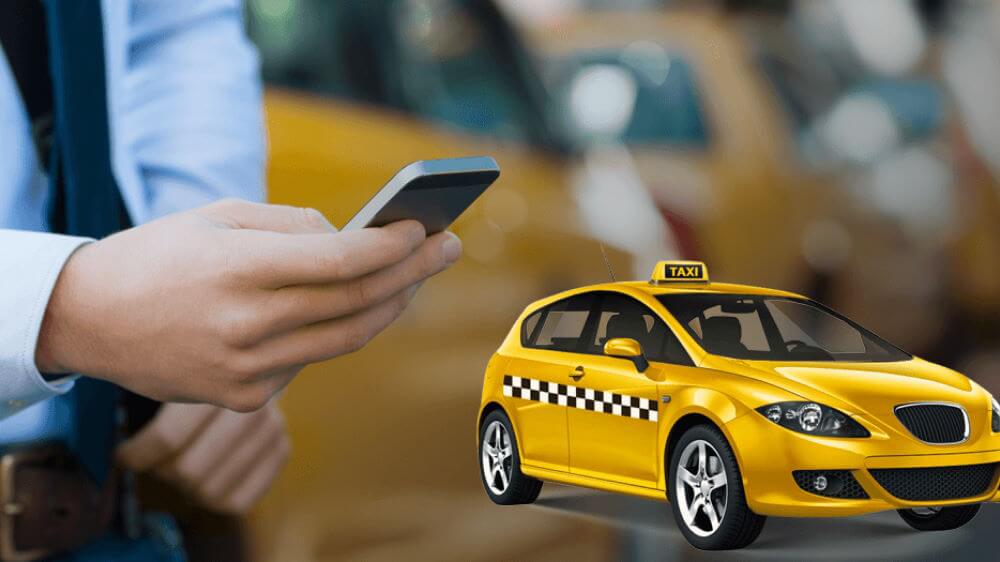
As mentioned before, a taxi booking application is the culmination of three components: Rider app, driver app, and admin panel. Each calls for its own suite of functions and features to streamline business operations for all who are involved. Hence, the complexity of app capabilities is one of the main drivers of the overall taxi app development cost and, of course, duration.
App owners will have to decide whether to craft a minimum viable product (MVP) or build a completed version of a taxi booking mobile application. An MVP version is a stripped-down app that only consists of the basic features needed for operation while completing a full-fledged product, which would require more complicated functionalities.
The Basic Features
You can build a custom taxi booking app with a solid foundation of the following features:
For Passengers
- User Registration/Login: Allow users to sign up or log in through their emails, phone numbers, or social media accounts. This process is often made easy and fast to encourage user adoption.
- Ride Booking: This is a core function that enables on-demand users to connect with the nearest drivers through your platform. Passengers will be required to enter their pick-up and drop-off locations, select the vehicle type (e.g., standard car, luxury car, SUV), and add special requests or notes for drivers.
- Live GPS Location Tracking: Passengers can keep track of their rides in real time based on the most convenient route from pickup to the dropoff point. GPS integration enables calculating trip fares based on distance and time traveled.
- Payment Gateways: Provide multiple payment options for users to choose from, like credit/debit cards, digital wallets, or cash. This feature also allows for automatic payments at the beginning or the end of each trip.
- Rating & Review System: Customers can share feedback about their trips or rate the quality of service, vehicle condition, drivers’ behavior, or else through the rating and review feature. It benefits passengers by holding drivers accountable for valuable insights for future improvements.
- Push Notifications: Keep users posted about their trip details, ride status updates, promotions, and other useful info.
- Help & Support: This is where passengers can reach out when they need assistance during or after the trip. Passengers can message or call the support agents.
For Drivers
- Driver Registration/Login: Similar to the user registration process, drivers need to register and log in to activate their profiles, which require personal information and details, such as driver’s license, vehicle information, background checks, etc.
- Accept/Reject Ride Requests: When connected with nearby customers, drivers have the option to take or decline ride requests based on relevant details (I.e., pickup location, destination, availability, etc.)
- Navigation System: This in-app feature helps drivers navigate to their pick-up and drop-off locations using the most efficient route.
- Earnings Dashboard: Drivers can access reports and keep track of their daily, weekly, or monthly earnings. The dashboard also provides trip details like booking history, tips, bonuses, etc.
- Help & Support: Offer drivers easy access to supporters from the taxi service provider in case of any issues or inquiries.
For Admins
- Dashboard/Admin Panel: It serves central control that enables admins to overview and monitor real-time activities, and access and analyze data from both the driver-side and customer-side of a taxi booking platform, as well as manage the app performance overall.
- Driver Management & User Management: These are two features with the same functions yet different targets. In driver management, admins should be able to approve, add, remove, disqualify, or even suspend drivers from the platform when needed. The action is taken based on their performance data (Such as ratings, reviews, and ride histories) recorded in the app. User management does likewise, but for passengers.
- Trip/Ride Management: Through the provided user interface, admins can access insights into trip requests, cancellations, refunds, etc., so that they can track the status of each ride (Ongoing, completed, and canceled). In emergencies, admins can also take over a driver’s account to resolve issues or disputes arising from a particular ride.
- Fare & Payment Management: In this feature set, administrators manage and secure payment gateways, fare calculations, discounts/coupon code management, and other related data. Also, they can set the revenue model and adjust fare rates based on vehicle type, time of day, demand (surge pricing), and special promotions or discounts.
- Geofencing & Zone Management: Admins can create geofenced areas for specific operational purposes, like defining zones with different pricing or restricting service to certain areas.
The Advanced Features
A more complex app always requires additional features that are otherwise available in a basic one. The possibilities of technology are endless, so taxi app developers can play with their creativity to make their apps stand out.
Multi-language Compatibility
If targeting an international audience, it is a must to build a taxi app that supports multiple languages. Non-native travelers can switch the app language to the one that is convenient for them.
In-app Wallet Integration
Modern taxi businesses today can include an in-app wallet system. With this feature, users can add money to their wallets and pay for their rides without the hassle of handling cash or inputting credit card information every time.
Voice Command Integration
Introducing a voice command feature that enables passengers and drivers to interact with the taxi booking app using natural language processing (NLP) technology will bring an easier and more convenient user experience. For instance, users ask the app to book a ride by speaking the order out loud instead of typing.
Carpooling/Ride-sharing
Passengers heading in the same way can share a ride and split the fare with this feature. Drivers can pick these customers up in a sequence that does not affect the dropoff point of other passengers. Group-ride approaches like this help passengers reduce costs and waiting time for all tagalongs. From an environmental perspective, carpooling can reduce traffic congestion and carbon emissions.
Examples of the Most Popular Taxi Apps
In the global taxi market, there are many well-known names for cab booking platforms. If you are stuck figuring out a really good taxi booking app idea, there is no harm in learning from the current top players within the industry before coming up with a brilliant one of your own.
Uber
Universally recognized as a pioneer in ride-hailing services, Uber was founded in 2009 by an America-based app development company. Uber has its services available in more than 900 metropolitan areas across the globe.
This “super app” offers a variety of ride options, comprising economy, premium, accessible vehicles, carpooling, bike-sharing, etc., in one single platform. When it comes to taxi mobile app development, a majority of developers or organizations view Uber as a role model for their products.
Lyft
Known as Uber’s direct competitor, Lyft is an existing taxi business that was established in 2012. The United States and Canada are the two main Lyft’s markets. This taxi service provider offers customers standard luxury car services, scooter-sharing, and bike-sharing services in addition to standard ride options.
Furthermore, Lyft also provides a feature called “Round Up & Donate,” which allows users to round up fares to the nearest dollar and donate differences to a charity of their choice. Thus, Lyft has gained a good reputation for its emphasis on local community engagement and driver welfare.
Grab
Operating since 2012, Grab is a Singapore-based tech company that owns the ecosystem of ride-hailing, food delivery, and package delivery services throughout Southeast Asia. In one mega platform, Grab offers a number of features equivalent to different services: Motorbike taxis (GrabBike), private cars (GrabCar), premium vehicles (GrabPremium), and many more.
Additionally, Grab has its e-wallet, called “GrabPay,” which enables customers to make payments for services within the app. With a simplified user interface and strong customer support, Grab is still competing fiercely with other global players in the taxi industry and expanding its services beyond transportation into e-commerce and other sectors.
DiDi
DiDi is a Chinese taxi booking app that has been in the market since its launch in 2012.
According to the most recent statistics, DiDi has over 550 million users, with an average of around 30 million rides per day. DiDi diversifies its ride-hailing services by providing bike-sharing and carpooling options for customers.
In addition, the taxi booking platform offers car rental services, which enable users to rent vehicles for periods of time at their disposal. The app supports multiple payment modes (like cash, credit card, or DiDi’s own e-wallet system) and various languages.
Ola Cabs
Founded in December 2010, Ola Cabs is a prominent ride-hailing service headquartered in Bangalore, India. However, its services extend beyond India, being available in over 250 cities across countries such as Australia, New Zealand, and the United Kingdom.
One signature of Ola Cabs is that the platform gives users different ride options like economy, business class, premium, and shared rides. Specifically, the “Ola Share” feature allows passengers to share a ride with others who head in the same direction at a lower price. In addition to taxi hailing, Ola also provides food delivery services (Ola Foods) and offers e-wallet options for payment (Ola Money).
Putting Together the Pieces of Taxi Mobile App Development
A taxi booking app idea can be brought to fruition in five primary phases:
- Market Research & Planning
- UI/UX Designing
- App Coding & Testing
- App Launch & Maintenance
- Research & Planning
Market Research & Planning
Like any type of software, a taxi booking app project begins with the fundamental step of brainstorming, researching, and planning in order to create a functional app from scratch for an already existing taxi business or a newfound one.
In this phase, mobile app developers need to go through a few sub-steps to extract accurate insights for their future solution and define their value proposition:
- Market Analysis: It is requisite to examine the latest trends in the current market, understand the competition (in which there are too many taxi booking software and apps), and identify the potential niches that your mobile app could fill.
- Target Audience Identification: Defining the primary users of your taxi booking app is the next important mission to accomplish. Who are they? What are their needs, preferences, and pain points? The user range could be wide or narrow based on your app’s capabilities and fulfillment, spanning from daily commuters and tourists to corporate clients.
- Business Model Definition: Choose a business model that guides how your taxi application will generate revenue. Examples: Commission-based subscriptions and in-app advertisements.
- Feasibility Study: The last but not least step in this phase is to assess the technical and financial feasibility of your app idea. This is when factors like initial investment, ongoing costs, and potential return on investment are taken into account for possibility.
At the end of this phase, you should have a detailed business plan, including the app’s target audience, features, platform and device support, monetization strategy, etc.
UI/UX Designing
The following phase is UI/UX design, which is essential for building an intuitive and engaging user interface and experience for your mobile app.
- Wireframing: Sketch out the basic structure of your mobile app screens and flow between them to visualize the user journey.
- Prototyping: Next, build a clickable prototype of your taxi app that simulates the user interface and interactions. This step is crucial for gathering early feedback and making necessary adjustments.
- Design Implementation: Finalize the visual design of your application, including color schemes, fonts, icons, and other graphical elements aligning with your brand identity and appeal to your target audience.
App Coding & Testing
This is the point when developers start coding for both frontend (client-side) and backend (server-side) components based on the approved design and functionalities. The objective is to build a functional taxi booking app that works and is free from bugs, glitches, and errors.
- Frontend Development: This stage involves implementing the UI design into code to create taxi app parts that users interact with. Technologies often used included Swift or Objective-C for iOS apps and Kotlin or Java for Android apps.
- Backend Development: Set up servers, databases, and APIs that handle the app’s operations, such as user registration, ride booking, and payment processing.
- Testing: A rigorous testing process is run to identify bugs, glitches, and errors that could impact the overall performance of the app before launch.
App Launch & Maintenance
Once your taxi app passes the testing round, it is time for its debut on the market.
- App Submission: Developers submit their products to the respective app stores (I.e., Apple App Store or Google Play Store) for approval.
- Marketing: The development team will work with an in-house marketing team or external agencies to promote their taxi booking app through campaigns and ads. These activities are necessary to save your app from being drowned in an ocean of available competitors.
- Ongoing Support & Maintenance: Keep track of user feedback and continually optimize the application over time based on that input. It also includes addressing technical issues, updating features, and fixing bugs as needed.
Taxi/Cab Booking App Development with Orient Software
Looking for credible taxi app development services? Come to Orient Software.
We are the best in building custom software solutions in various industry domains, and taxi booking is no exception. Our team has years of experience in developing mobile applications for the transportation industry, including taxi booking apps for both iOS and Android platforms. We have a proven record of top-notch, user-friendly, and efficient software solutions that meet our clients’ requirements. Do not solely take our word for it - check out our portfolios and testimonials to see our successful projects in action.
The Orient team offers end-to-end services. But our support does not stop there - we provide ongoing maintenance and updates to make sure your taxi booking app stays relevant in the ever-changing tech landscape.
Our development process is highly collaborative, so we can ensure we know our clients’ vision and bring it to life. Partner with us today if you crave to bring your idea to a realistic taxi booking app and join the ranks of successful players in the ride-hailing industry. Get started by leaving us a message.

